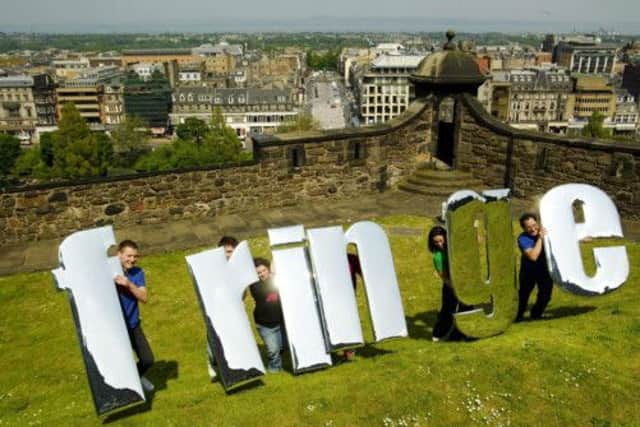Brian Ferguson: Fringe financial model needs review


The majority of those harbouring ambitions to enter the fray at the world’s biggest arts festival this year had until the end of April to get their act together and confirm a slot in the printed programme, because to make an impact in Edinburgh in August you would be foolhardy not to be in that tome.
There has been no noticeable decline in the number of people handing out paper flyers on the Royal Mile over the last decade. If anything, the feeding frenzy on the High Street has appeared to grow with each passing year.
Advertisement
Hide AdAdvertisement
Hide AdA good reason is the seemingly unstoppable increase in the number of Fringe shows each year. There were just over 2,000 Fringe shows in the official programme five years ago. That figure had risen steadily to just shy of 2,700 last year.
In 2008, there were 247 venues taking part in the Fringe. By 2012 that had soared to 279.
There was a fair amount of discussion about the Fringe’s box office performance last year, when ticket sales dropped by 1 per cent. This could be put down almost entirely to a clash with the London Olympics for the first ten days or so of shows.
Some people tied themselves up in knots trying to work out whether the 2012 Fringe performance was poorer than it appeared, mainly because there was a 6 per cent increase in the number of shows – ignoring the fact that a single production could be on for the entire Fringe in a 1,000-seater venue – or be a one-off cabaret night for fewer than 50 punters. But such an increase in the number of shows was a remarkable return when the Fringe was going virtually head-to-head with the Olympics. The newly-refurbished Assembly Rooms building on George Street and the return of the Famous Spiegeltent to an adjacent site were said to have skewed the figures.
But large venues come and go every year, like Assembly Theatre’s experiment in Princes Street Gardens, Edinburgh Castle esplanade and giant circus tents like the one which will be set up on an old brewery site at Fountainbridge this August.
I’d be very surprised if there was a drop in either the number of venues taking part this year, or if the final tally of shows is down when the programme rolls off the presses. The fact the 1,000-seater McEwan Hall is being brought back into use by promoters Underbelly, who will also be running shows in the Festival Theatre’s new extension, should help beef up numbers.
I also suspect that without any major sporting distractions this summer actual audience numbers will be on the rise again.
But during and after last year’s Fringe there were plenty of rumblings that the Fringe bubble had burst, or was at least a bit deflated. I suspect they will be louder this year.
Advertisement
Hide AdAdvertisement
Hide AdIt was the wider economics of the Fringe, rather than fluctuating audience numbers, that provided the main area of concern, with the majority of costs going up annually in the face of the economic downturn. It is now perhaps time for a full review of how the Fringe stacks up financially – for performers, venue managers, promoters and ticket-buyers.
The Fringe’s own guide to “doing a show” estimates that you would now need almost £30,000 to pay for a show for a 120-capacity audience in an early-evening slot. Accommodation costs alone are estimated at £3,000. It costs £400 just to get a listing in the Fringe programme, never mind an eye-catching advert. Factor in flyers and posters, publicists and publicity photos and it quickly adds up.
But the whole extravaganza also relies on the smooth running and financial viability of venues. That’s why I would expect someone at the city council to sit and pay attention to the warnings from the Fringe last week that operators are finding it a growing challenge to break even.
There are fears new operators will be deterred from setting up venues by the financial barriers, particularly over a licensing regime said to be the most expensive in Britain for temporary venues. Most worrying is the idea that venues will shrink away from shows that are not guaranteed ticket-sellers – unless the existing financial model is altered.
With the Fringe renowned as an international marketplace for new, untested and challenging work, could its best selling point be at risk without some form of intervention in the foreseeable future?